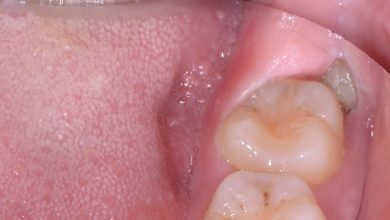Do Bass Have Teeth? Find Out the Jaw-Dropping Facts!

Bass have teeth that are sharp and pointed, allowing them to catch and consume their prey efficiently. Bass have teeth that are sharp and pointed, allowing them to catch and consume their prey efficiently.
These predatory fish use their teeth to tear into smaller fish, insects, and even small mammals. Bass teeth are designed to grip and hold onto their prey, ensuring it doesn’t escape. While the teeth of bass may not be as prominent or intimidating as those of other predatory fish, they are still an essential tool for survival.
Understanding the role of teeth in the life of a bass can provide insights into their feeding habits and behavior. We will delve deeper into the subject and explore the fascinating world of bass teeth.
Understanding Bass Teeth
Understanding Bass Teeth
Bass, like many other fish species, have teeth that play a crucial role in their survival. While not all fish have teeth, bass have a set of sharp, needle-like teeth that aid them in capturing and consuming their prey. These teeth are designed to grasp and hold onto struggling prey, allowing the bass to secure its meal before swallowing it whole. The teeth also enable the bass to tear apart larger prey into more manageable pieces. This ability to consume a variety of prey significantly contributes to the bass’s success as a predator.
Bass teeth are particularly important in their feeding habits. Their sharp teeth enable them to maintain a strong grip on their prey, preventing potential escapes. Additionally, bass teeth assist in breaking down the tough exteriors of crustaceans, ensuring efficient digestion. In summary, the teeth of a bass are an essential adaptation that allows them to secure and consume their prey effectively.
To learn more about the fascinating world of bass and their distinctive teeth, continue exploring our website.
The Anatomy Of Bass Teeth
Bass teeth play a crucial role in their feeding habits and survival. These teeth are designed to help them capture and consume their prey effectively. The structure of bass teeth varies depending on the species and their feeding preferences.
| Type of Bass Teeth | Description |
|---|---|
| Cardiform Teeth | Small, densely packed teeth found on the jaws, roof of mouth, and tongue. These teeth are used for holding and grasping prey. |
| Villiform Teeth | Long, slender teeth found in the upper and lower jaws. They are ideal for capturing and crushing small prey. |
| Canine Teeth | Large, sharp teeth located in the front of the mouth. They are used for puncturing and impaling larger prey. |
The structure and arrangement of these teeth allow bass to effectively consume a variety of prey, including fish, crustaceans, and even small mammals. Bass teeth also influence their feeding habits. For instance, species with cardiform teeth tend to feed on small insects and crustaceans, while those with canine teeth are more likely to prey on other fish.
In conclusion, the anatomy of bass teeth is specifically adapted to aid them in their feeding habits. Understanding the different types of bass teeth and their functions provides valuable insight into the behavior and ecology of these remarkable fish.
Jaw-dropping Facts About Bass Teeth
Bass teeth are a fascinating topic. These predatory fish have sharp, needle-like teeth that can inflict serious damage on their prey. Discover more jaw-dropping facts about bass teeth in this engaging article.
Bass teeth are an incredible example of nature’s adaptation for survival. These fish possess some unique characteristics that allow them to excel at catching their prey. One striking feature is their teeth, which are not only numerous but also sharp and well-designed. When it comes to feeding, bass have developed surprising adaptations. Their sharp teeth enable them to grab and hold onto prey effectively. In addition, their jaw structure allows for a powerful bite, allowing them to tear through their food easily. Moreover, bass teeth have some amazing facts associated with them. Did you know that bass have villiform teeth, which are tiny and closely spaced, perfect for holding onto small prey? Additionally, the tips of their teeth are slightly curved, ensuring a firm grip on slippery prey. In conclusion, bass teeth are remarkable examples of evolutionary specialization. Their unique characteristics and adaptations for feeding make bass incredibly skilled predators in their aquatic habitats.
Common Misconceptions About Bass Teeth
Bass are often known for their sharp teeth, but there are some common misconceptions about them. Many people wonder if all bass have teeth, and the answer is a resounding yes. Bass, including both largemouth and smallmouth bass, have a set of strong, sharp teeth. These teeth play a crucial role in their feeding behavior, allowing them to capture and consume their prey effectively.
However, it is important to debunk the myth that bass can bite humans. While bass do have teeth, they are not designed to bite or harm humans. Bass teeth are adapted for gripping and tearing their prey, which consists mainly of smaller fish. They do not pose a threat to humans unless provoked or mishandled, but such instances are incredibly rare.
It’s essential to understand that bass are generally not aggressive towards humans and typically avoid interaction. When fishing or handling bass, it is always important to exercise caution and use proper techniques to avoid injury. Respecting their habitat and handling them with care can help ensure a safe and enjoyable fishing experience.
Evolution Of Bass Teeth
Bass, like many fish species, have teeth that play a crucial role in their survival and adaptation. The evolution of bass teeth can be traced back through the evolutionary history of fish teeth. Over time, fish have developed specialized dental structures to better suit their feeding habits and environments. These adaptations have allowed bass to thrive and survive in various aquatic ecosystems. The relationship between dental morphology and survival is evident in the different tooth types and arrangements seen in bass. Their teeth are well-suited for capturing and consuming prey, ensuring their continued existence in the wild. Bass teeth reflect the success of evolutionary processes and the dynamic nature of natural selection in shaping organisms’ characteristics. The evolutionary journey of bass teeth showcases the incredible diversity and specialization that has occurred over millions of years.
The Role Of Teeth In Bass Survival
Bass are known for their sharp teeth, which play a crucial role in their survival. The importance of teeth for bass hunting cannot be underestimated. These teeth allow them to capture and grip their prey effectively, ensuring a successful hunt. The impact of teeth on bass diet is significant. With their teeth, bass can consume a variety of prey, including smaller fish, crayfish, and insects. The sharp teeth enable them to tear and swallow their food, aiding in their digestion process. Additionally, teeth serve as a defensive mechanism for bass. When threatened, bass can use their teeth to inflict injury or ward off predators. This helps protect them and increase their chances of survival in their natural habitats. Bass teeth are an essential adaptation that allows them to thrive in their ecosystems and maintain their position as dominant predators in aquatic environments.
Conservation And Protection Of Bass Teeth
Conservation and protection of bass teeth are important aspects of preserving bass populations. Threats to bass and their teeth include overfishing, pollution, and habitat destruction. Overfishing can lead to a decline in bass populations, affecting their overall health and ability to reproduce. Pollution in water bodies can also harm bass and their teeth, making them more susceptible to diseases and infections. Habitat destruction, such as the loss of spawning areas and vegetation, can further exacerbate the challenges faced by bass.
To preserve bass populations, several steps have been taken. These include implementing fishing regulations and limits, creating protected areas, and promoting responsible angling practices. By regulating fishing activities and restricting harvest limits, authorities can ensure that bass populations are not excessively exploited. Creating protected areas, such as marine reserves or sanctuaries, can provide safe havens for bass and help them recover from the threats they face. Encouraging responsible angling practices, such as catch and release, can also minimize the impact on bass populations.
| Strategies for conserving bass teeth: |
|---|
| 1. Promoting awareness among anglers about bass tooth care and its role in their overall health. |
| 2. Encouraging the use of barbless hooks to minimize damage to bass teeth during catch and release. |
| 3. Educating anglers on proper handling techniques to avoid causing unnecessary harm to bass teeth. |
| 4. Implementing conservation programs to restore and protect bass habitat, ensuring the availability of suitable foraging grounds and shelter for a healthy tooth development. |
Bass Teeth In Angling And Sport Fishing
One of the most common questions among avid anglers and sport fishing enthusiasts is whether bass have teeth. The short answer is yes, bass do have teeth. However, understanding the significance of bass teeth in angling and sport fishing is crucial for both handling the fish safely and avoiding teeth-related injuries.
Bass teeth contribute to the challenges faced by anglers who target this species. The sharp, needle-like teeth of bass can easily cut through fishing lines and cause them to snap. As a result, it is important for anglers to use appropriate fishing gear and techniques to prevent line breakage.
When handling bass, it is essential to take precautions to avoid injuries caused by their teeth. Anglers can safely handle bass by using tools such as lip grips or wetting their hands to prevent the fish from slipping, and always being aware of the location of the fish’s teeth.
To minimize the risk of teeth-related injuries while catching bass, anglers can implement a few tips. Firstly, using a quality fishing line and leader with a higher pound test can help withstand the bass’s teeth. Secondly, employing techniques such as keeping the fish’s head submerged in the water while unhooking it can prevent accidental injuries.
Overall, understanding the presence and significance of bass teeth is essential for anglers and sport fishing enthusiasts. By adopting the necessary safety measures, anglers can enjoy the thrill of catching bass while minimizing the risks associated with their teeth.
Frequently Asked Questions For Do Bass Have Teeth
Does A Bass Bite Hurt?
Yes, a bass bite can hurt.
Does Holding Bass By The Lip Hurt Them?
Holding bass by the lip can hurt them as it can damage their delicate jaw structures. It’s best to support their body and belly when handling them to avoid harm.
Do Bass Have Jaws?
Yes, bass have jaws.
Do Bass Remember Being Caught?
Bass do not remember being caught. Their brains lack the ability to retain memories of catching events.
Conclusion
It is clear that bass do indeed have teeth. These sharp, interlocking teeth serve a vital purpose in their feeding habits, allowing them to capture and consume their prey with ease. Understanding the anatomy and behavior of bass can help anglers choose the right lures and techniques for successful fishing.
So, next time you’re out on the water, keep in mind that bass have teeth and tailor your approach accordingly for a thrilling fishing experience.




